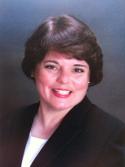 The Ninth Circuit Court of Appeals encompasses over one-third of the United State’s geographical area and nearly one-fifth of its population. For better or worse, its legal influence reflects its geographical and population dominance. In the past two months, the Ninth Circuit has churned out a number of decisions with noteworthy religious liberty implications that may spread to other circuits in the next few years.
The Ninth Circuit Court of Appeals encompasses over one-third of the United State’s geographical area and nearly one-fifth of its population. For better or worse, its legal influence reflects its geographical and population dominance. In the past two months, the Ninth Circuit has churned out a number of decisions with noteworthy religious liberty implications that may spread to other circuits in the next few years.
First, a favorable decision came from the Ninth Circuit in Intermountain Fair Housing Council v. Boise Rescue Mission Ministries, 2011 WL 4347029 (9th Cir., Sept. 19, 2011). The Boise Rescue Mission Ministries, a non-profit Christian organization, ran a residential drug treatment program that did not charge for its services but required its participants to be, or want to be, Christians. During the intense year-long program, participants were required to attend a broad range of Christian activities, including worship services, prayer groups, and Bible study, a requirement made known to all applicants for the program. Separately, the ministry’s two homeless shelters gave people a free place to sleep and eat. Open to persons of all faiths, the shelters encour- aged but did not require their guests to attend chapel services and morning devotions.
The ministry was sued under the federal Fair Housing Act (FHA) for discrimination on the basis of religion by a woman who had avoided a jail sentence by agreeing to participate in the residential drug treatment program and by a man who had stayed at the homeless shelters. Both filed complaints with the federal Department of Housing and Urban Development, which dismissed the complaints for lack of evidence. They then filed suit but lost in the district court.
On appeal, the Ninth Circuit held that the residential drug treatment program and the shelters all fell within the FHA’s exemption under which religious organizations that own or operate dwellings for a noncommercial purpose may give preference to, or limit use by, “persons of the same religion... unless membership in such religion is restricted on account of race, color, or national origin.” 42 U.S.C. § 3607(a). Saying that the exemption must be construed narrowly, the court nonetheless ruled that the ministry could limit its drug treatment program to persons who shared its faith and could require its participants to become Christians in order to “graduate” from the program. Similarly, under the exemption, the homeless shelters could “prefer” guests who attended religious services. The alleged preference had been the practice of letting guests who attended services go first in the food line.
The Ninth Circuit hit a home run in Boise Recue Mission but then went 0-for-3 in cases involv- ing religion at public schools and universities. In Alpha Delta Chi-Delta Chapter v. Reed, 648 F.3d 790 (9th Cir. 2011), the Ninth Circuit acknowledged that in Christian Legal Society v. Martinez, 130 S. Ct. 2971 (2010), the Supreme Court refused to decide whether a public university could apply a nondiscrimination policy to prohibit a religious group’s requirement that its leaders and members affirm its religious beliefs. Four justices would have decided the issue in favor of the religious groups and found that application of a nondiscrimination policy to restrict religious groups’ ability to choose their leaders violated the First Amendment. Only one justice, now retired Justice Stevens, stated that such a troubling application of a nondiscrimination policy was permissible. The remaining four justices explicitly stated they were not addressing that question.
Despite acknowledging that the Martinez decision did not mandate its result, the Ninth Circuit determined that a public university could exclude religious groups from campus by deeming their requirement that their officers and members agree with their religious beliefs to be “religious discrimination” in violation of the university’s nondiscrimination policy. The case was then remanded to determine whether the policy had been applied to other student groups and not just religious groups.